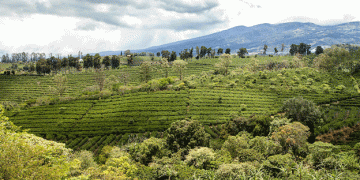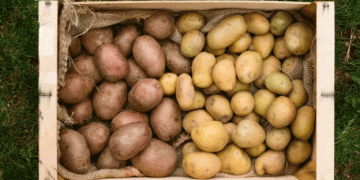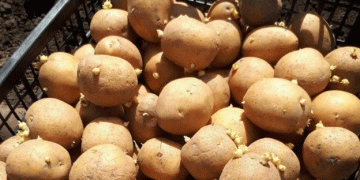#Potatocultivation #soiltexture #soilstructure #nutrientmanagement #waterlogging #soilcompaction #soilaeration #sandysoils #clayloams #potatoyield #farmingtechniques #agriculturalscience
This article delves into the critical role of soil texture and structure in potato production. It highlights the impact of soil composition on water retention, nutrient availability, root growth, and crop losses due to waterlogging. By analyzing data from various sources, the article provides insights into the suitability of different soil types for growing potatoes, emphasizing the importance of nutrient management and soil aeration. Additionally, it addresses the challenges posed by soil compaction and offers guidance on diagnosing and treating sandy soil constraints.
Potatoes, being a staple crop with specific soil requirements, necessitate farmers, agronomists, agricultural engineers, farm owners, and agricultural scientists to understand the significance of soil texture and structure for successful potato cultivation.
According to research conducted in Australia, the demand for washed potatoes has led to the cultivation of fresh market crops primarily on light sandy soils. These soil types facilitate easy washing and result in desirable skin finish when managed properly. However, the low fertility of sandy soils calls for meticulous nutrient management practices to achieve optimum yields.
On the other hand, brushed fresh market potatoes and those grown for processing thrive in friable sandy loams to clay loams. These heavier soils enable the production of potatoes with high dry matter content, a sought-after trait for processing. Nevertheless, these soil types are prone to compaction from heavy machinery and traffic, which can hinder root penetration and rapid growth.
To identify compacted or hard set layers in the soil profile, a soil penetrometer can be employed. This tool assists in determining the appropriate cultivation or deep ripping methods required to rectify the issue.
[table id=4 /]
When selecting sites for potato production, it is crucial to prioritize areas with adequate surface runoff and well-drained soil profiles. Pre-planting preparation should focus on eliminating compaction within the top 60 cm of soil, ensuring proper aeration and drainage through constructed mounds. This step helps reduce the risk of waterlogging and promotes favorable conditions for potato growth.
Understanding the relationship between soil texture, structure, and potato cultivation is paramount for achieving optimal yields. By considering the specific needs of different potato varieties and implementing appropriate soil management practices, farmers can overcome constraints associated with soil type and create favorable conditions for successful potato production.
Source: Australian Potato Growers






